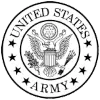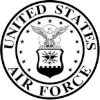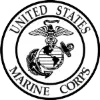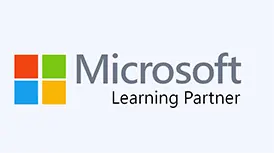Course Details
Course Description:
The AZ-040: Automating Administration with Windows PowerShell course provides students with the fundamental knowledge and skills to use PowerShell for administering and automating administration of Windows servers.
The course helps students to identify and build the command they require to perform a specific task. Additionally, students will learn how to build scripts to accomplish advanced tasks such as automating repetitive tasks and generating reports.
This course provides prerequisite skills supporting a broad range of Microsoft products, including Windows Server, Windows Client, Microsoft Azure, and Microsoft 365. The course will not focus on any one of those products, although Windows Server, which is the common platform for all of those products, will serve as the example for the techniques this course teaches.
Audience Profile
The course is designed for IT Professionals that are already experienced in general Windows Server, Windows client, Azure, and Microsoft 365 administration, and who want to learn more about using Windows PowerShell for administration. No prior experience with any version of PowerShell or any scripting language is assumed. This course is also suitable for IT Professionals already experienced in server administration, including Microsoft Exchange Server, Microsoft SharePoint Server, and Microsoft SQL Server.
Job role: Administrator
Skills gained:
- Describing the functionality of Windows PowerShell and using it to run and find basic commands.
- Identifying and running cmdlets for local system administration.
- Working with the Windows PowerShell pipeline.
Module 1: Getting started with Windows PowerShell
This module will introduce you to Windows PowerShell and provide an overview of the product’s functionality. The module explains how to open and configure Windows PowerShell. It also explains how to run commands and use the built-in Help system in Windows PowerShell.
Lessons
Windows PowerShell overview
Understand Windows PowerShell command syntax
Find commands and get help in Windows PowerShell
Lab : Configuring Windows PowerShell, and finding and running commands
Configuring the Windows PowerShell console application
Configuring the Windows PowerShell ISE application
Finding and running Windows PowerShell commands
Using About files
Module 2: Windows PowerShell for local systems administration
This module introduces you to the different types of cmdlets commonly used for system administration. While you can search for cmdlets each time you need to accomplish a task, it is more efficient to have at least a basic understanding of these cmdlets. This module also explains how to manage Windows 10 by using PowerShell..
Lessons
Active Directory Domain Services administration cmdlets
Network configuration cmdlets
Server administration cmdlets
Windows PowerShell in Windows 10
Lab : Performing local system administration with PowerShell
Creating and managing Active Directory objects
Configuring network settings on Windows Server
Creating a website
Module 3: Working with the Windows PowerShell pipeline
This module introduces the pipeline feature of Windows PowerShell. The pipeline feature is included in several command-line shells such as the command prompt in the Windows operating system. However, the pipeline feature in Windows PowerShell provides more complex, flexible, and capable functionalities compared to other shells. This module provides you with the skills and knowledge that will help you use Windows PowerShell more effectively and efficiently.
Lessons
Understand the pipeline
Select, sort, and measure objects
Filter objects out of the pipeline
Enumerate objects in the pipeline
Send and pass pipeline data as output
Lab : Using PowerShell pipeline
Selecting, sorting, and displaying data
Filtering objects
Enumerating objects
Converting objects
Module 4: Using PSProviders and PSDrives
This module introduces the PSProviders and PSDrives adapters. A PSProvider is basically a Windows PowerShell adapter makes some form of storage resemble a hard drive. A PSDrive is an actual connection to a form of storage. You can use these two technologies to work with various forms of storage by using the same commands and techniques that you use to manage the file system.
Lessons
Using PSProviders
Using PSDrives
Lab : Using PSProviders and PSDrives with PowerShell
Creating files and folders on a remote computer
Creating a registry key for your future scripts
Create a new Active Directory group
Module 5: Querying management information by using CIM and WMI
This module introduces you to two parallel technologies: Windows Management Instrumentation (WMI) and Common Information Model (CIM). Both these technologies provide local and remote access to a repository of management information including access to robust information available from the operating system, computer hardware, and installed software.
Lessons
Understand CIM and WMI
Query data by using CIM and WMI
Make changes by using CIM and WMI
Lab : Querying information by using WMI and CIM
Querying information by using WMI
Querying information by using CIM
Invoking methods
Module 6: Working with variables, arrays, and hash tables
Variables are an essential component of scripts. You can use variables to accomplish complex tasks that you can't complete by using a single command. This module explains how to work with variables, arrays, and hash tables as steps in learning how to create Windows PowerShell scripts.
Lessons
Use variables
Manipulate variables
Manipulate arrays and hash tables
Lab : Using variables, arrays, and hash tables in PowerShell
Working with variable types
Using arrays
Using hash tables
Module 7: Windows PowerShell scripting
This module explains how to package a Windows PowerShell command in a script. Scripts allow you to perform repetitive tasks and more complex tasks than cannot be accomplished in a single command.
Lessons
Introduction to scripting with Windows PowerShell
Script constructs
Import data from files
Accept user input
Troubleshooting and error handling
Functions and modules
Lab : Using scripts with PowerShell
Signing a script
Processing an array with a ForEach loop
Processing items by using If statements
Creating users based on a CSV file
Querying disk information from remote computers
Updating the script to use alternate credentials
Module 8: Administering remote computers with Windows PowerShell
This module introduces you to the Windows PowerShell remoting technology that enables you to connect to one or more remote computers and instruct them to run commands on your behalf.
Lessons
Use basic Windows PowerShell remoting
Use advanced Windows PowerShell remoting techniques
Use PSSessions
Lab : Performing remote administration with PowerShell
Enabling remoting on the local computer
Performing one-to-one remoting
Performing one-to-many remoting
Using implicit remoting
Module 9: Managing Azure resources with PowerShell
This module provides information about installing the necessary modules for cloud services management. It explains how to use PowerShell commands to perform some simple administrative tasks on cloud resources such as Azure virtual machines (VMs), Azure storage accounts, and Azure subscriptions. This module also describes how to use the Azure Cloud Shell environment to perform PowerShell-based or Bash-based administration directly from the Azure portal.
Lessons
Azure PowerShell
Introduce Azure Cloud Shell
Manage Azure VMs with PowerShell
Manage storage and subscriptions
Lab : Azure resource management with PowerShell
Activating the Azure subscription and installing the PowerShell Az module
Using Azure Cloud Shell
Managing Azure resources with Azure PowerShell
Module 10: Managing Microsoft 365 services with PowerShell
This module describes how to use PowerShell to manage Microsoft 365 user accounts, licenses, and groups, Exchange Online, SharePoint Online, and Microsoft Teams.
Lessons
Manage Microsoft 365 user accounts, licenses, and groups with PowerShell
Manage Exchange Online with PowerShell
Manage SharePoint Online with PowerShell
Manage Microsoft Teams with PowerShell
Lab : Managing Microsoft 365 with PowerShell
Managing users and groups in Azure AD
Managing Exchange Online
Managing SharePoint
Managing Microsoft Teams
Module 11: Using background jobs and scheduled jobs
This module describes how to use background jobs and scheduled jobs. It also explains how to create scheduled jobs and retrieve job results.
Lessons
Use background jobs
Use scheduled jobs
Lab : Jobs management with PowerShell
Starting and managing jobs
Creating a scheduled job
- Before attending this course, students must have:
- Experience with Windows networking technologies and implementation.
- Experience with Windows Server administration, maintenance, and troubleshooting.
We offer live-instructor group training classes for your team.
Upskill your team from the comfort of your office or online.
Benefits of Group Training Include:
- Experienced Professional Instructor Trains Your Team
- Content Focused On Your Team's Needs
- Convenient Scheduling and Class Setup
- Significant Per/Student Cost Savings
- Online, On-Site and Blended Options Available
Virtual Live Instructor
Financing Available
Free Repeat






Testimonials
This was the class I needed.
The instructor Jeff took his time and made sure we understood each topic before moving to the next. He answered all of our questions, and I don't know about the rest of the students, but was very pleased with this experience.
I finally understand how to use Excel.
-Amanda T (Yale New Haven Hospital).
Great class!
We were able to cover a lot of information in one day without getting overwhelmed.
-Maria R (Microsoft).
We offer private Azure group training services for organizations looking to upskill their team members with a live-instructor.
Training options include:
Learn more about how Azure Private Group Training from Business Computer Skills can help your team.



